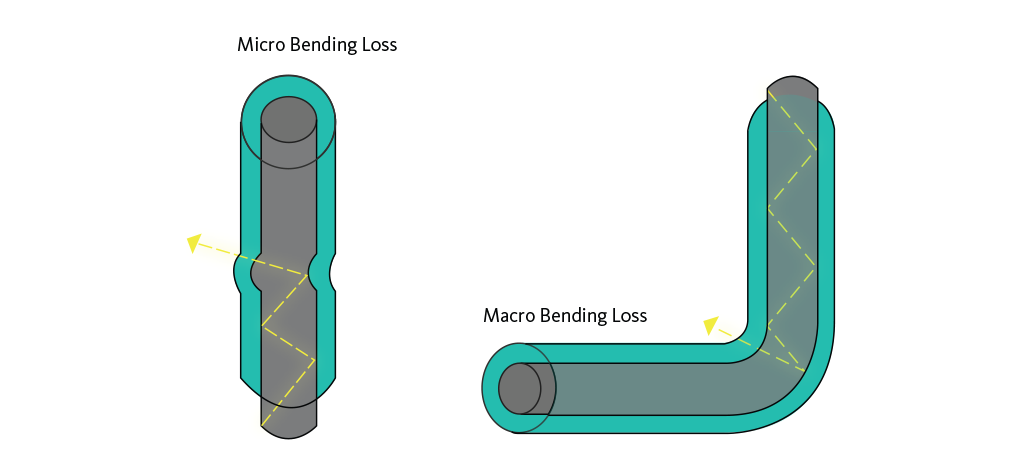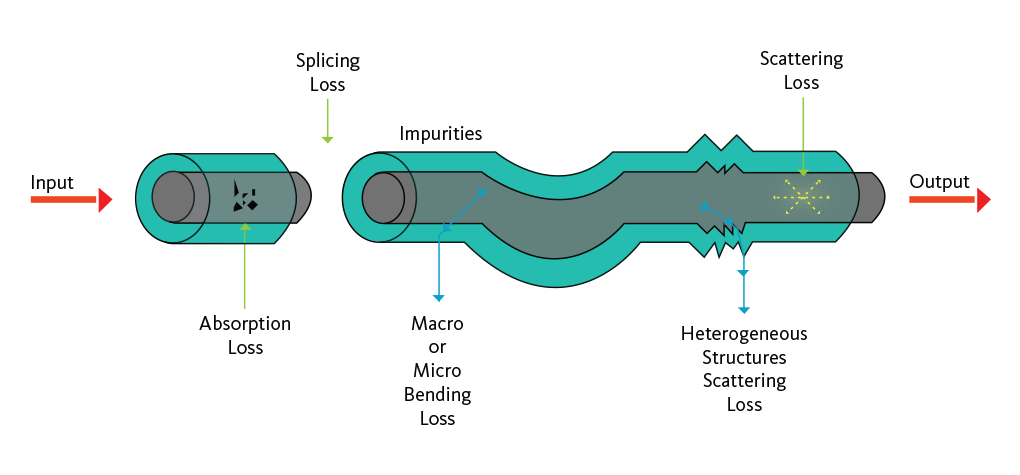Fiber: Loss in Fiber Optic Performance
Published by Cablesys on Feb 22nd 2018
The transmission of fiber optics has many benefits over other channels like copper or radio. Fiber optic connectivity is more ideal in comparison to copper because fiber optic is lighter and can transfer signals at higher speeds over an extended range. Nevertheless, fiber optic performance can still be affected by many factors. Before finalizing a fiber optic network, many potential problems must be addressed. Performance loss in fiber optics is usually a minor issue, but lately it has been the number one concern for engineers when choosing to work with fiber optics. This article will further cover the topics of loss in fiber optic performance and how to best combat loss.

As a beam of light, that holds signals, travels through the central region of the fiber optic, the light’s power decreases. Therefore, the connection strength becomes more diminished. This decrease in light energy is commonly known as fiber optic loss or attenuation. The loss in energy and signal intensity is referred to as dB. Ultimately, loss in fiber optic connectivity needs to be minimized to achieve speed and range with the optical signals. External and internal causes, otherwise known as extrinsic fiber attenuation and intrinsic fiber core attenuation, of the loss must be investigated to contain the issue of loss.
Extrinsic Fiber Core Attenuation
Incorrect management of fiber optic materials usually prompts extrinsic fiber core attenuation (EFA). The main two types of EFA are bend loss and splicing loss.

Incorrect fiber optic handling is one of the more common problems that can prompt fiber optic loss, like bend loss. The true cause of the loss is the actual bend of the fiber optic. There are two general types of bends. The first is micro bending, and the second is macro bending. Micro bending can be a sharp but microscopic curvatures that create displacements; local axial of a few microns or spatial wavelength of a few millimeters. Other causes are the fiber buffer shrinking along the fiber and poor manufacturing of the cable. Macro bending happens when a bend in the radius of the fiber is two millimeters or more. To minimize the opportunity for fiber loss to occur, the causes below should be considered:
- Deviation of fiber core from axis
- Manufacturing errors
- Mechanical restrictions during fiber optic placement
- Environmental factors like shift in temperature, humidity, or pressure
Another primary cause of extrinsic fiber attenuation is fiber optic splicing. In the field, it is very common for loss to occur because of improper splicing, terminating, cleaning and handling. Some recommended techniques to help eliminate loss are using top-tier fiber optic connectors and the fusion splicing method when fusing fibers together.

Intrinsic Fiber Core Attenuation
Extrinsic fiber core attenuation, like bending and improper handling, is just some of the many reasons for fiber optic loss. Intrinsic fiber attenuation (IFA) is also notable. Intrinsic fiber core attenuation happens when the fiber optic itself causes its own loss by one of the following two internal system errors. The first reason is light absorption and the second is scattering.
One leading cause of fiber optic loss throughout optical transmission is light absorption. The substance of the fiber optic absorbs the light. This process is known as material absorption. Once the light is absorbed, it is converted to alternate energy sources, such as heat, as a result of molecular resonance and wavelength pollution. Moreover, atomic structure, a pure material, only consumes certain wavelengths of radiation. It is impractical to produce entirely pure materials. For this reason, fiber optic producers choose to inject germanium and other materials with pure silica to maximize fiber optic core performance.
Another leading source of fiber optic loss is scattering. Scattering indicates the separation of light that is triggered by the molecular level inconsistency in the glass formation. When scattering takes place, all the light energy disperses into different directions. Although, some of the energy remains forward traveling. The light energy that is not moving forward will essentially become lost in the fiber optic link. To combat this, the fiber optic core should contain no defects, and the fiber optic coating and extrusion should be closely monitored.

Closing
The graphic above summarizes all the main causes of fiber optic loss that have been discussed in this article. The main takeaways are as follows. Intrinsic fiber core attenuation can be decreased by using the appropriate fiber optic and optical components required. Extrinsic fiber attenuation can be decreased with the correct usage and skillset needed while working with fiber.
